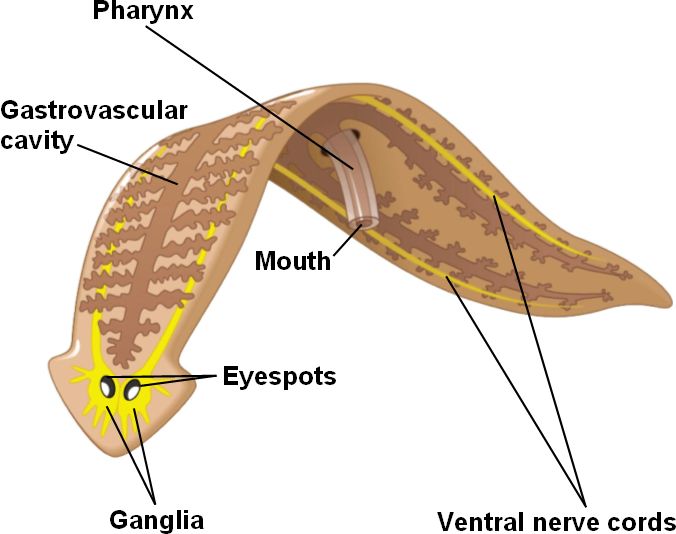Description / Morphology


Planarians are bilaterally symmetrical. They are categorized into orders according to the type of pharynx, organization of the reproductive system, and branching pattern of the gut.Their bodies are compressed with high surface area to volume ratios. Some marine species can be colorful, but terrestrial turbellarians are more plain. They locomote by cilia on a mucus trail. Some species can swim, however. 1
Distribution / Ecology
Planarians are widespread all over the world. Land planarians thrive on high temperatures so they live in the tropical and subtropical areas of the world and are spreading outward all over.
2
Growth / Reproduction
Planarians are hermaphroditic so they can possess both the male and female sex glands. A planarian can’t fertilize its own eggs so they need another planarian to put sperm on the eggs. A planarian can also separate itself into two by fragmentation and regeneration. 3
Taxonomy
Kingdom: Animalia
Phylum:Platyhelminthes
Class:Turbellaria
Order:Tricladia
Family:Planariidae
Genus:Planaria
Species:Planaria dactyligera , Planaria occulta,Planaria torva
4
Human Use / Role in Culture
Some species are able to re-grow severed limbs. Few however, are able to re-grow themselves. Planaria are among those few. When a single planarian is cut, it will grow back into two planarians. If one is cut into thousands of pieces, thousands will grow back in its place. Humans are not able to re-grow severed limbs, but scientists are studying regeneration in animals in hopes that one day regeneration will be possible in humans. One of the species they are studying is Planaria.
5
References:
1. Planarians http://www.planarians.org/
2. University of Florida http://entnemdept.ufl.edu/creatures/misc/land_planarians.htm
3. Animal Planet http://animals.howstuffworks.com/worms/planarian-info.htm
4. Itis http://www.itis.gov/servlet/SingleRpt/SingleRpt?search_topic=TSN&search_value=54528
5. Exploratorium http://www.exploratorium.edu/imaging_station/research/planaria/story_planaria.pdf
Comments (0)
You don't have permission to comment on this page.